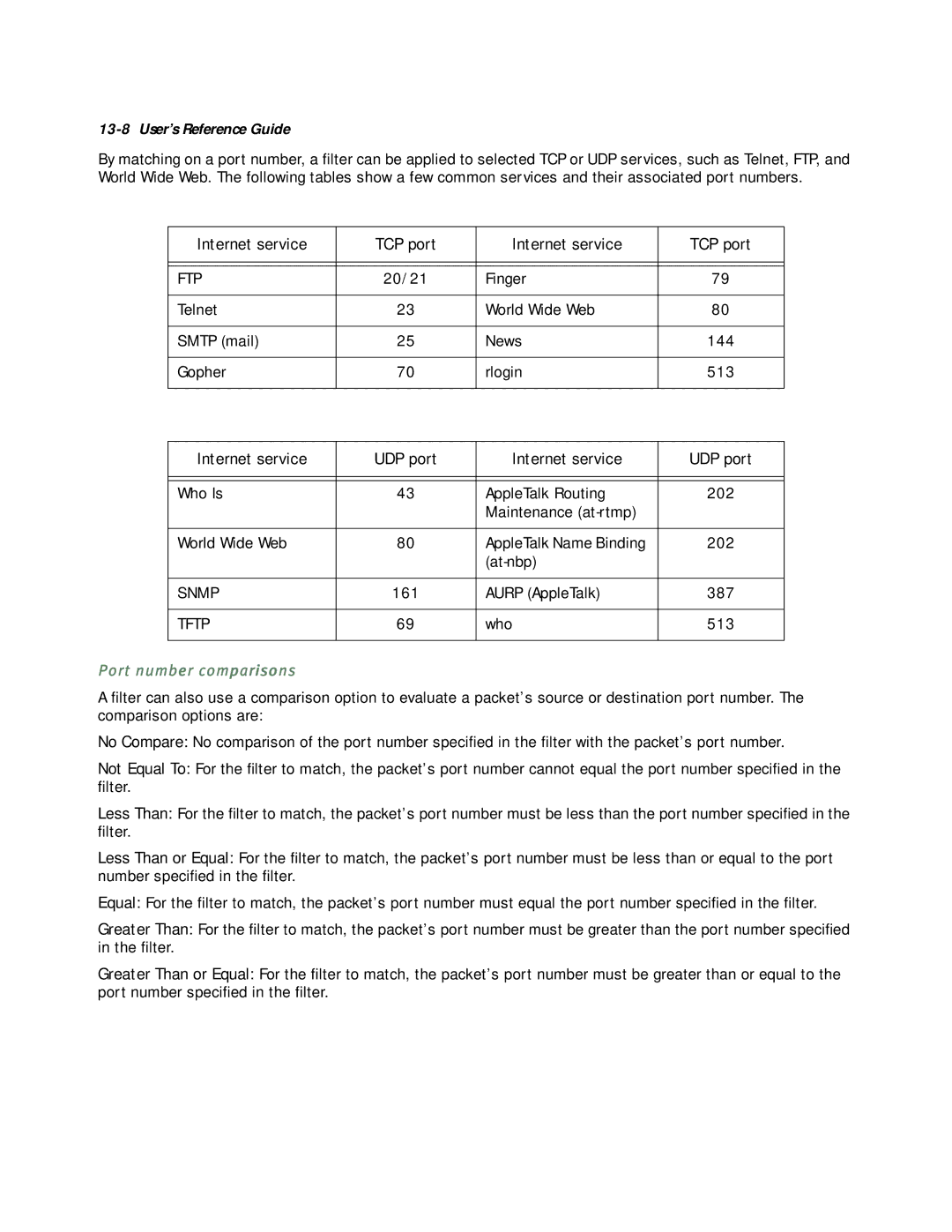13-8 User’s Reference Guide
By matching on a port number, a filter can be applied to selected TCP or UDP services, such as Telnet, FTP, and World Wide Web. The following tables show a few common services and their associated port numbers.
Internet service | TCP port | Internet service | TCP port |
|
|
|
|
|
|
|
|
FTP | 20/21 | Finger | 79 |
|
|
|
|
Telnet | 23 | World Wide Web | 80 |
|
|
|
|
SMTP (mail) | 25 | News | 144 |
|
|
|
|
Gopher | 70 | rlogin | 513 |
|
|
|
|
|
|
|
|
Internet service | UDP port | Internet service | UDP port |
|
|
|
|
|
|
|
|
Who Is | 43 | AppleTalk Routing | 202 |
|
| Maintenance |
|
|
|
|
|
World Wide Web | 80 | AppleTalk Name Binding | 202 |
|
|
| |
|
|
|
|
SNMP | 161 | AURP (AppleTalk) | 387 |
|
|
|
|
TFTP | 69 | who | 513 |
|
|
|
|
Port number comparisons
A filter can also use a comparison option to evaluate a packet’s source or destination port number. The comparison options are:
No Compare: No comparison of the port number specified in the filter with the packet’s port number.
Not Equal To: For the filter to match, the packet’s port number cannot equal the port number specified in the filter.
Less Than: For the filter to match, the packet’s port number must be less than the port number specified in the filter.
Less Than or Equal: For the filter to match, the packet’s port number must be less than or equal to the port number specified in the filter.
Equal: For the filter to match, the packet’s port number must equal the port number specified in the filter.
Greater Than: For the filter to match, the packet’s port number must be greater than the port number specified in the filter.
Greater Than or Equal: For the filter to match, the packet’s port number must be greater than or equal to the port number specified in the filter.
